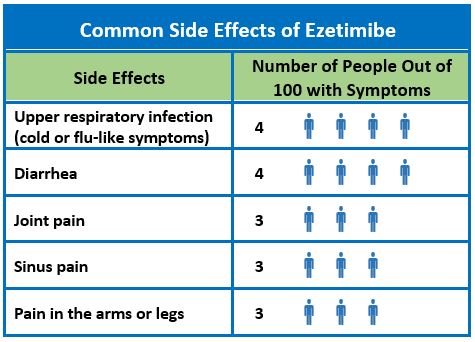In the realm of cardiovascular health, maintaining healthy cholesterol levels plays a crucial role in preventing heart disease and other complications. Two commonly prescribed medications, ezetimibe and rosuvastatin, work synergistically to lower LDL (bad) cholesterol levels and reduce the risk of cardiovascular events. While both medications target cholesterol management, they differ in their mechanisms of action, potential side effects, and overall impact on cholesterol levels.
Delving into the Mechanism of Ezetimibe
Ezetimibe, a cholesterol absorption inhibitor, operates within the digestive system to reduce the absorption of cholesterol from food. It interferes with a specific protein in the small intestine responsible for cholesterol uptake, effectively lowering the amount of cholesterol that enters the bloodstream.
Ezetimibe’s primary target is dietary cholesterol, the cholesterol we consume through food. By reducing the absorption of dietary cholesterol, ezetimibe helps lower overall LDL cholesterol levels and contributes to improved cardiovascular health.
Exploring the Action of Rosuvastatin
Rosuvastatin, a statin medication, works by inhibiting an enzyme called HMG-CoA reductase, a key player in cholesterol production within the liver. By blocking this enzyme, rosuvastatin reduces the liver’s ability to produce cholesterol, leading to lower LDL cholesterol levels.

Rosuvastatin primarily targets endogenous cholesterol, the cholesterol produced by the liver. By reducing endogenous cholesterol production, rosuvastatin contributes to a significant decrease in LDL cholesterol levels and improves cardiovascular risk factors.
Comparing Ezetimibe and Rosuvastatin: Distinct Approaches to Cholesterol Management
Ezetimibe and rosuvastatin, though both effective cholesterol-lowering medications, differ in their mechanisms of action and target sites:
Ezetimibe: Acts as a cholesterol absorption inhibitor, reducing the absorption of dietary cholesterol.
Rosuvastatin: Functions as a statin, inhibiting HMG-CoA reductase and reducing endogenous cholesterol production.
These distinct mechanisms of action allow ezetimibe and rosuvastatin to complement each other when used in combination therapy. Ezetimibe addresses dietary cholesterol absorption, while rosuvastatin targets cholesterol production in the liver. This dual approach often leads to more significant LDL cholesterol reductions compared to either medication alone.
Potential Side Effects: Balancing Benefits with Caution
Both ezetimibe and rosuvastatin are generally well-tolerated medications, but they can occasionally cause side effects. The most common side effects associated with ezetimibe include diarrhea, abdominal pain, and headache. Rosuvastatin, on the other hand, may cause muscle-related side effects, such as muscle pain, weakness, and rhabdomyolysis, a rare but serious condition involving muscle breakdown.


It is crucial to inform your healthcare provider about any pre-existing medical conditions or medications you are taking before starting ezetimibe or rosuvastatin. Regular monitoring of liver and muscle enzymes may be necessary to ensure safe and effective treatment.
Choosing the Right Approach: Individualized Treatment Plans
The decision between ezetimibe and rosuvastatin or their combination therapy depends on individual patient factors and cholesterol levels. For patients with mild to moderate cholesterol elevation, ezetimibe may be an appropriate starting point. For those with more severe cholesterol concerns or a higher risk of cardiovascular events, rosuvastatin or combination therapy may be recommended.

Healthcare providers carefully consider individual patient characteristics, such as age, medical history, and current cholesterol levels, when selecting the most suitable treatment plan. Regular monitoring of cholesterol levels and any potential side effects is essential throughout treatment.
Conclusion: Empowering Informed Decisions for Cholesterol Management
Ezetimibe and rosuvastatin, with their distinct mechanisms of action and complementary effects, play significant roles in cholesterol management and cardiovascular risk reduction. Understanding the differences between these two medications empowers individuals and healthcare providers to make informed decisions about their cholesterol treatment plans. By carefully considering individual needs and risk factors, we can optimize cholesterol management strategies and promote long-term cardiovascular health.